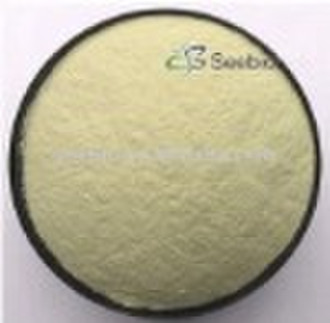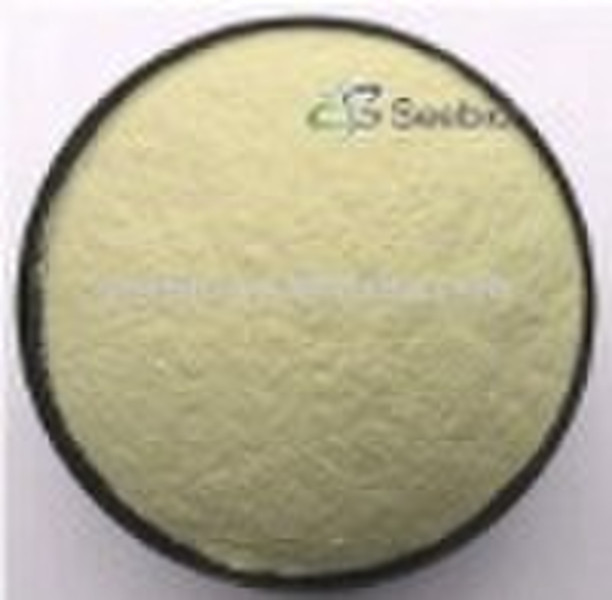Catalog
-
Catalog
- Agriculture
- Apparel
- Automobiles & Motorcycles
- Beauty & Personal Care
- Business Services
- Chemicals
- Construction & Real Estate
- Consumer Electronics
- Electrical Equipment & Supplies
- Electronic Components & Supplies
- Energy
- Environment
- Excess Inventory
- Fashion Accessories
- Food & Beverage
- Furniture
- Gifts & Crafts
- Hardware
- Health & Medical
- Home & Garden
- Home Appliances
- Lights & Lighting
- Luggage, Bags & Cases
- Machinery, Hardware & Tools
- Measurement & Analysis Instruments
- Mechanical Parts & Fabrication Services
- Minerals & Metallurgy
- Office & School Supplies
- Packaging & Printing
- Rubber & Plastics
- Security & Protection
- Service Equipment
- Shoes & Accessories
- Sports & Entertainment
- Telecommunications
- Textiles & Leather Products
- Timepieces, Jewelry, Eyewear
- Tools
- Toys & Hobbies
- Transportation
Filters
Search
Vitamin K2(35),MK-7
original price: 15,00 USD
Shanghai, China

Emma hu
Contact person
Basic Information
Menaquinon-7; MK7;Vitamin MK7,menaquinone, menatetrenone, menatetren, menatetrenona, menatetrenonum;(all-E)-2-(3,7,11,15,19,23,27-Heptamethyl-2,6,10,14,18,22,26-octacosaheptaenyl)-3-methyl-1,4-naphthalenedione ; CAS Number: 27670-94-6 Molecular Formula: C46H64O2 Molecular Weight:649.0 Specificions: 0.13-0.5% in Oil, Food Grade ; 0.13-0.5% Powder(sustained released preparation), Food Grade 1.0% in Oil, Food Grade 1.0% Powder(sustained released preparation), Food Grade 1.3% in Oil, Food Grade 1.3% Powder(sustained released preparation), Food Grade Usage: Vitamin K2 is essential for the carboxylation of glutamate residues in certain proteins, to give -carboxyglutamate. This modification allows the protein to bind calcium, an essential event in the blood clotting cascade. Carboxylation of glutamate is also important in other proteins involved in the mobilization or transport of calcium. Vitamin K2 is also a known activator of SXR. Currently in Japan, Vitamin K2 is being used to treat the degenerative bone disease osteoporosis. Special Effects: 1. Dual function of bone-Reabsorption prevention and Osteoblast-Promoting : VK2 promotes the formation of Osteocalcin, increases the density of bones and reduces bone loss. Its a new medicine to cure and prevent osteoporosis and fracture. 2. Curing haemorrhage caused by VK2 deficiency: VK2 promotes the formation of thrombin, accelerates blood clotting, accelerates and maintains proper clotting time. 3. Preventing and retarding calsification of blood vessels, preventing arteriosclerosis caused by calsification. 4. VK2 can be used as a PKA active regulator to promote the detoxifcation of liver, prevent and cure hepatic fibrosis, Liver Cancer and Lung Cancer. 5. Vitamin K2 derived from the fermented soy product natto has a higher bioavailability than vitamin K1. * For detailed information, please feel free to call us or send us emails. We're looking forward to your contact. About Microcapsules (0.13%,1.3%powder) 1. Microencapsulation protects the active vitamin K2 from the surrounding environment(air, moisture, light, heat, metals iron etc.) which will destroy the activity of the vitamin K2. So the stablity of the products is enhanced. 2. For the wall material is&edsp;&edsp;water-soluble cellulose, so the microcapsules can dissolve in water and be adsorbed easier by bodies. 3. Particularly, the vitamin K2 diffuses through the shell in a slow, sustained dose. The sustained release make the use of the medication more completely and efficiently. Reference: Stimulatory effect of menaquinone-7 on bone formation in elderly female rat femoral tissues in vitro: Prevention of bone deterioration with aging VITAMIN K2 (MENAQUINONE) A second vitamin K (vit K2) was isolated very early from putrified fish meal as a product of microbial synthesis (McRee et al., J. Am. Chem. Soc. 1939, 61, 1295). It has the same absorption peaks in UV region as vit K1 but with a slightly lower intensity (molar abs. coeff. at 248 nm: 11800). Vitamin K2 has a poly-isoprenoid unsaturated side-chain of various length, with isoprene units varying from 4 to 13. These compounds are called menaquinones-n or MK-n. As an example of the various menaquinone forms, MK-7 has 6+1=7 isoprenoid units or 35 carbons in the side chain and can be called vitamin K2(35) or menaquinone-7. This could be called also 2-methyl-3-all-trans-farnesyl digeranyl-1,4-naphthoquinone. Farnesol and geraniol are the alcohols with 3 (15 carbons) and 2 (10 carbons) isoprenoid units, respectively. One of the first menaquinones discovered was MK-6 (Isler, 1958) which can be called 2-methyl-difarnesyl-1,4-naphthoquinone. Most menaquinone-containing organisms contain a series of menaquinones, the major homologs with n=6 to 9 constituting about 90% of the total. Among human foods, dairy products are particularly rich in menaquinone species. As an example, a common cheese (Camembert) contains about 40 ng/g of vitamin K1 but about 600 ng/g of menaquinones (less than 2% MK5, MK6 and MK7, 9% MK4, 27% MK8 and 62% MK9). It was shown by oral administration to vitamin K-deficient chicks that isoprenologs with 3 to 5 isoprenoid groups in either menaquinone or phylloquinone type compounds have maximum biological activity. Vitamin K In the early 1900's, research was conducted on the cause of pellagra. A US government investigator, Joseph Goldberger, took his study to a Jackson, Mississippi, orphanage, where many of the children had the disease. The symptoms disappeared when the children were fed high protein diets of meat, beans, and eggs. His conclusion was that pellagra was caused by a protein deficiency. By 1930, researchers had isolated the real cause of pellagra as that of niacin. It is now known that the body can produce the niacin it requires from the amino acid tryptophan, even such when foods as meat, beans, and eggs do not contain significant levels of niacin, thus explaining the reason pellagra improved with a protein diet. Using chickens, studies in the 1920"s and 30's in Denmark revealed that blood clotting was slow after certain restricted diets. Through further research, it was found that a special fat soluble vitamin was the cause. By 1940, Dr. Henrik Dam had isolated the vitamin and named it Vitamin K for "koagulationsvitamin," the Danish spelling for the vitamin responsible for clotting. There are three notable forms of Vitamin K, K1 (phytonadione/phylloquinone/phytonactone), K2 (menaquinones), which can be formed by natural bacteria in the intestines, and K3 (menadione), the most active synthetic form of the preparations K3-K7. Absorption of K1 is from the gut (duodenum and jejunum) via the lymphatic system. Conditions that impair lipid absorption will also impair the absorption of Vitamin K, especially antibiotics. In their effort to rid foreign bacteria, antibiotics destroy the normal intestinal flora needed for Vitamin K synthesis, causing a deficiency of the vitamin. Since it is produced in the intestines, it cannot qualify as an official vitamin. Excretion of absorbed Vitamin K occurs mainly in the feces (30-40%), but there is some excreted in the urine (15%) as well. Vitamin K has a common basic structure that acts as a cofactor for the enzymes essential for normal blood-clotting, namely, in forming the blood clotting chemical "prothrombin" (coagulation factor II). In the liver, Vitamin K plays an important role in the actions of other factors (VII, IX, X), along with proteins C, S, and Z, in addition to its role with prothrombin. Although these proteins are "synthetic," in the absence of K, they become inactive. In the presence of K, prothrombin is converted to thrombin, an active enzyme which, in turn, converts fibrogen to fibrin to form a blood clot. Vitamin K is most commonly known for its routine use for the newborn. A healthy newborn has low plasma prothrombin levels, but levels in premature infants may be inadequate to prevent hemorrhage. Newborns are customarily given 0.5-1.0 mg. of Vitamin K by injection. Preterm infants are given 1 mg. or more. If needed, the dose is repeated a week later. Phytonadione (K1) is an analogue of Vitamin K; but it has the quickest onset of action, the most prolonged duration, and is the most potent of all the Vitamin K forms. It is also safer than menadione (K3) to use on newborns. K3 is the only one that could cause toxicity, causing hemolytic anemia. Hemolytic anemia happens when the RBC's die more quickly than the body can reproduce. In addition, it speeds liver damage, producing jaundice, deafness, and severe neurological problems, including retardation in infants. There is no record that the other two forms have produced toxic levels. Care must be taken with IV injections of Vitamin K, since they can cause facial flushing, excessive perspirations, chest tightness, cyanosis, vascular collapse, and shock as well as anaphylaxis. The drug warfarin (Coumadin) is the most recognized medication that counteracts the effects of Vitamin K. On the other hand, Vitamin K does not reverse overdoses of the injectable anticoagulant, heparin. Those taking warfarin should avoid foods that contain such coumarin derivatives as tonka beans, melilot, sweet clover and sweet woodruff -- which is not a problem for most. Trauma, physical dehabilitation, kidney failure, and prolonged use of broad spectrum antibiotics often cause a Vitamin K deficiency. Malabsorption syndromes also contribute deficiency for the same reason. Another reason for a Vitamin K deficiency is the excess intake of fat soluble vitamins (A, D, and E). Breastfed infants, especially those delivered at home, may be especially prone to Vitamin K deficiency. An intake of 5 mcg., in the form of phylloquinone or menaquinone, per day is recommended for the first six months of life, and 10 mcg. during the second six months. Breast milk is considered the poorest source of Vitamin K. The recommended amount in infant formulas is 4 mcg. of Vitamin K/100 kcal. Vitamin K sometimes appears on baby food and formula labels as the additive "phytonadione." Vitamin K proteins that depend on Vitamin K are found in bone, kidney, and other tissues and is known to play a significant role in the calcification of bone. It promotes proper blood clotting after cuts, scrapes, or surgeries, preventing internal bleeding and hemorrhaging. The best sources, outside of supplements, are found in green, leafy vegetables; of body weight per day for older children and adults, with 300-500 mcg. considered to be an adequate supply and, certainly, no more than 500 mcg. of synthetic Vitamin K is ever recommended. It is not usually included in a multivitamin, as there is an abundance occurring naturally.
Delivery terms and packaging
Packaging Detail: 100G,1Kg,2Kg,5Kg,25Kg Delivery Detail: within 7 days
Port: Shanghai
Payment term
Telegraphic transfer
MoneyGram
Western Union
-
Payment Methods
We accept:









